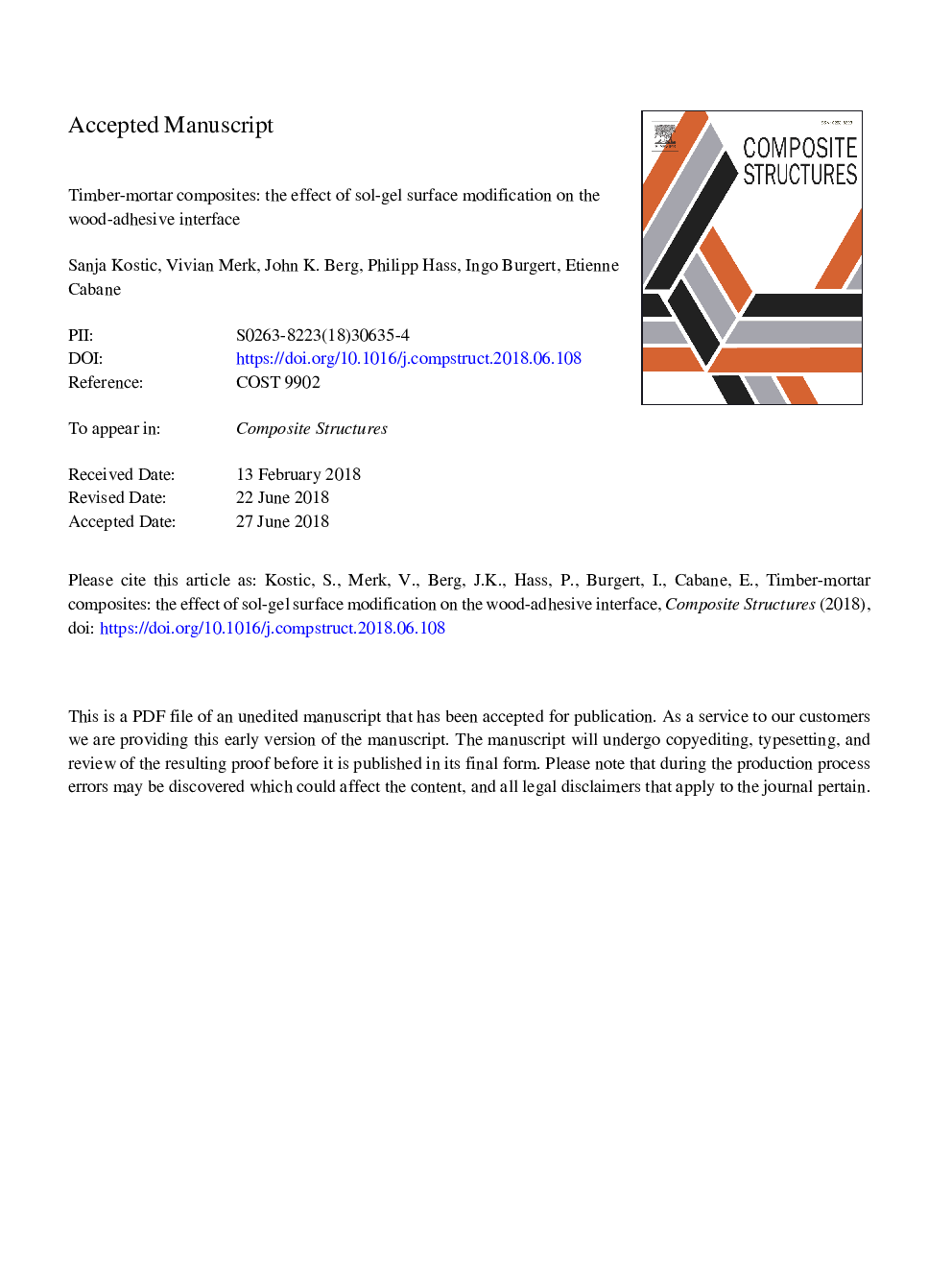| Article ID | Journal | Published Year | Pages | File Type |
|---|---|---|---|---|
| 6703353 | Composite Structures | 2018 | 17 Pages |
Abstract
Timber-mortar composite structures require rigid, strong, but also ductile connections to optimize their performances. Up to now, the preferred connection systems were based on metal fasteners and notches in wood. In this study, an alternative approach based on a fully glued connection was studied (using an epoxy-based system), and a wood pre-treatment was applied in order to enhance the compatibility and the adhesion properties at the interface between beech wood and mortar. The wood surface was functionalized with a xerogel obtained by means of a sol-gel process, consisting of two layers of silane nanofilms - namely tetra-ethoxysilane and (3-Aminopropyl) triethoxysilane. Chemical analysis of the wood surface confirmed the chemical bonding of the silanes. Microscopy images revealed that the silane pre-treatment also affects adhesive penetration into the wood. In terms of mechanical properties, 3-point bending tests on pre-treated beech wood-mortar samples showed an improved load bearing capacity in comparison to unmodified wood-mortar specimens.
Related Topics
Physical Sciences and Engineering
Engineering
Civil and Structural Engineering
Authors
Sanja Kostic, Vivian Merk, John K. Berg, Philipp Hass, Ingo Burgert, Etienne Cabane,
